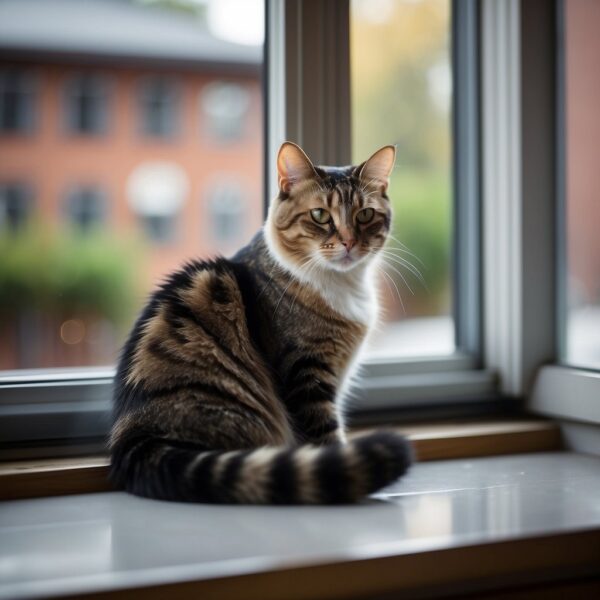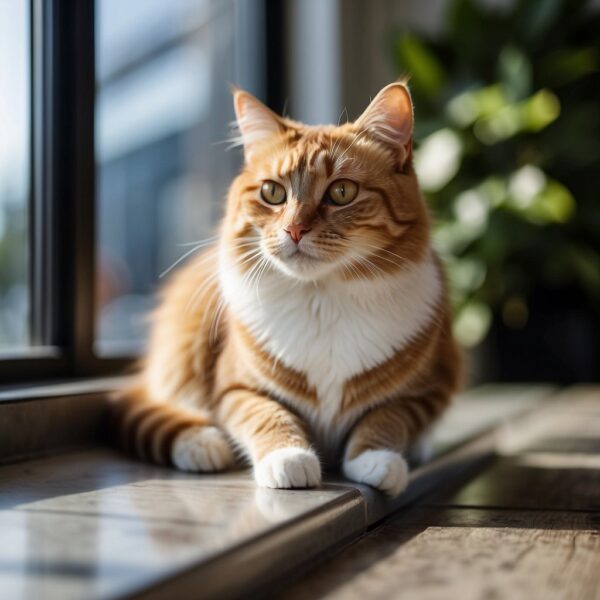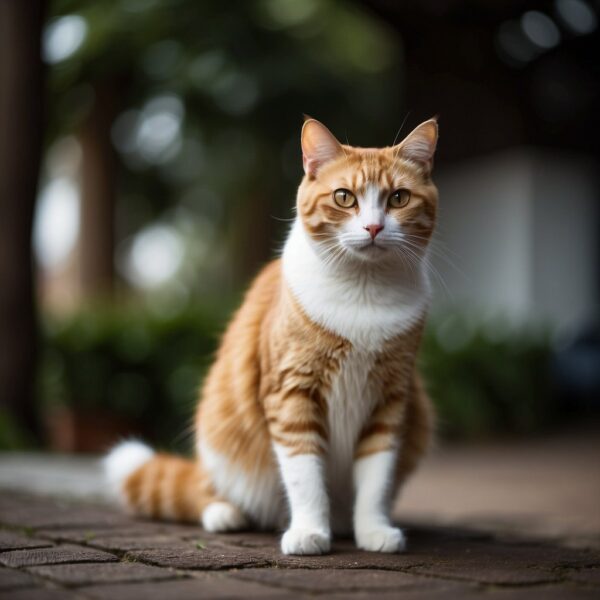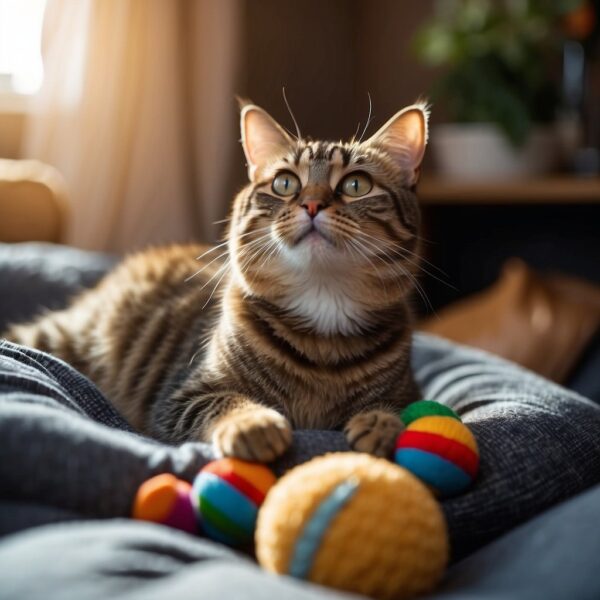
What is a Moggy? Term for Domestic Cats
A moggy is a term that’s fondly used within the UK to describe a cat that doesn’t belong to a recognized breed. These cats are often the result of non-selective breeding or are feral in origin. Without a pedigree, moggies come in a wide array of shapes, sizes, and coat colors and possess a range of personalities. The beauty and affection of a moggy make them beloved companions, recognized for their unique charm rather than a defined lineage. Their genetic diversity often contributes to a robust constitution, with many displaying a variety of traits inherited from their mixed ancestry.
In terms of their care, moggies don’t follow a specific breed standard and therefore come with varying behavioral patterns and care needs. Nonetheless, they typically require similar levels of care to purebred cats, including regular grooming, which is mostly self-conducted. Their diverse genetic background can influence their health, personality, and adaptability to different environments. Understanding the history and context of moggies enhances our appreciation for these cats and their place in our homes and societies.
Key Takeaways
- Moggies are non-pedigree, mixed-breed cats commonly found in the UK.
- They are diverse in appearance and personality due to their varied genetic makeup.
- Proper care and understanding their background can lead to a fulfilling companionship.
The Basics of Moggies
In exploring the realm of domestic cats, the term “moggy” surfaces often to describe non-pedigree, mixed-breed cats that exhibit a wide array of shapes, sizes, and personalities.
Defining ‘Moggy’
A moggy refers to domestic cats without an official pedigree or belonging to no particular cat breed. This term is commonplace in the UK and is synonymous with slang that characterizes these felines as typical, everyday house cats. A moggy often has ancestors that were feral or came about through non-selective breeding.
Characteristics of Moggies
Moggies boast a diverse range of characteristics that stem from their mixed heritage:
- Shapes and Sizes: They vary greatly, with no standard defining their bodily structure.
- Coat Colors: A spectrum of coat colors can be seen, including but not limited to tabby, solid, bi-color, and more.
- Temperament: Their personalities are not breed-specific and can range from independent to affectionate, playful to laid-back.
These cats are often admired for their unique combinations of traits, leading to a fascinating variety of companions.

Genetic and Breed Information
The genetic tapestry of cats is intricate, where both purebred and mixed-breed cats contribute to the feline gene pool. Moggie cats, in particular, represent a diverse genetic landscape, often with unforeseen combinations of traits and characteristics influenced by mutations and natural selection.
Understanding Cat Genetics
Cat genetics govern the inheritance of physical and behavioral traits in both purebred and mixed-breed cats. Each cat carries two copies of every gene, one from each parent, which combine to determine various traits. Moggie cats have a broad genetic pool, which results in a high level of variability in appearance and temperament. This diversity is sometimes enhanced by random genetic mutations that can lead to new characteristics within a population.
- Genetics: Fundamentally dictates the outcome of a cat’s physical features, such as coat color, pattern, and eye color.
- Mutations: Random changes in the DNA sequence that may introduce new traits or variations in moggies.
- Gene Pool: The collection of genes within a specific population of cats, including mixed breeds and purebreds.
Purebred vs. Mixed-Breed Cats
Purebred cats are selectively bred to conform to specific breed standards set by registry organizations, leading to a more predictable set of characteristics within that breed. Such cats have a pedigree, or a documented lineage that proves their status as members of a recognized breed. In contrast, mixed-breed cats, also known as moggies or mongrels, are not selectively bred and thus, have a more varied and less predictable genetic makeup.
- Purebred Cats:
- Pedigree: Documented evidence of a cat’s lineage within a recognized breed.
- Hybrid: The result of intentional breeding between two different purebreds.
- Mixed-Breed Cats:
- Genetic Pool: Typically more diverse than that of purebreds, contributing to wide-ranging traits.
- Moggie Cats: A term often used in the UK to refer to non-pedigree, mixed-breed cats.

Behavior and Personality
Moggy cats, or moggies, are known for their diverse and unpredictable behavior and personality traits. Unlike their purebred counterparts, whose temperaments can often be forecasted, moggies present a wide array of personality characteristics due to their mixed heritage.
Personality Traits of Moggies
Moggies demonstrate a broad spectrum of personalities, ranging from shy and introspective to outgoing and adventurous. Their playfulness and energy level can vary greatly, with some moggies displaying constant curiosity and a love for play, while others may prefer a more relaxed and laid-back approach to life. It’s important to note that their mixed breeding can bring out an unpredictable combination of traits, which makes every moggy truly unique.
- Shy: May hide or avoid interaction until comfortable.
- Outgoing: Seeks attention and enjoys exploring.
- Playful: Engages in games, often enjoying interactive toys.
- Laid-back: Content with lounging and casual interaction.
Socialization and Interactions
The level of socialization in moggies typically dictates how well they interact with their human companions and other pets. Early and consistent socialization can help a moggy become more confident and affectionate. When it comes to relationships with other cats or animals, moggies can be just as diverse. Some may thrive in a household with fellow felines or pets, showing love and affection, while others might prefer to be the sole pet, to receive undivided attention from their human family.
- Affection towards humans: Can range from independent to very affectionate.
- Interactions with other cats: May vary from friendly to solitary, depending on early socialization and temperament.
- Social behavior: Influenced by experiences during kittenhood and the cat’s individual personality.
Health and Lifespan
Moggies, or mixed-breed cats, are often noted for their robust health due to hybrid vigor, which can lead to a prolonged lifespan and a lower predisposition to certain genetic health problems than purebred cats. However, they can still face common feline health concerns that require proper care to ensure a healthy life.
Common Health Concerns
Moggies are susceptible to a range of health problems typical to all domestic cats. These include obesity, which can lead to diabetes and joint issues if not carefully controlled with diet and exercise. Cancer is another significant concern, and while it can affect moggies, the risk varies individually. Feline leukemia (FeLV) is a serious viral infection; however, it can be prevented with vaccinations.
Cardiovascular issues and kidney diseases are additional health concerns. Regular veterinary check-ups are crucial to diagnose and treat any such concerns promptly. It is also important to keep moggies indoors to minimize the risk of traumas and infectious diseases.
The Lifespan of Moggies
The typical lifespan of a moggy cat ranges from around 12 to 15 years, although some can live well into their twenties with proper care. This care includes a diet appropriate for their life stage, regular exercise, preventive health measures like vaccinations and parasite control, and regular health check-ups. By maintaining a healthy lifestyle and being vigilant about their health needs, owners can help their moggies achieve a long and healthy life.

Housing and Environment
When considering the housing and environment for a moggy, which is a non-pedigree domestic cat, important factors include their living arrangement—whether they will be kept indoors, outdoors, or both—and their litter habits. Both areas are crucial for the wellbeing of a house cat.
Indoor vs. Outdoor Living
Indoor living provides a safe environment for moggies, protecting them from traffic, predators, and diseases common amongst feral cats. Homes should have cat-proofed areas with plenty of vertical space for climbing, as well as scratching posts to encourage natural behavior.
Outdoor access, on the other hand, allows cats to exhibit their full range of natural behaviors such as exploring and hunting. However, it carries risks and may require a more vigilant approach to their safety. For moggies with outdoor access, a safe, enclosed space such as a catio or regular supervision is recommended to mitigate potential dangers.
History and Origins
The term “moggy” or “moggie” refers to non-pedigree, mixed-breed cats that have a rich history which mirrors the journey of domesticated cats around the world. This section unveils their historical background and the global presence of these beloved felines.
Historical Background of Domestic Cats
Domesticated cats’ ancestry traces back to the Near East’s African wildcat (Felis silvestris lybica), with DNA evidence showing domestication occurring around 9,000 years ago in the Middle East. They were likely attracted to human settlements by the abundance of prey like rodents. Farmers appreciated the pest control, fostering a beneficial relationship. This lineage slowly diverged from their wild relatives, becoming the companions known today.
The domestic cat’s proliferation was global, reaching Asia where breeds like the Siamese originated, and to Europe where they were both revered and persecuted throughout history. Their arrival in the Americas accompanied European settlers, leading to new breeds such as the Maine Coon.
Moggies Around the World
Contrary to pedigree counterparts like the Persian or Siamese, moggies do not adhere to breed standards. They are the charming result of natural, diverse breed intermixing. In the UK, the term “moggy” initially began as a nickname from the word “Maggie,” which implied a dishevelled old woman and later came to represent mixed-breed cats.
Globally, moggies are found in every corner, from the bustling cities of Asia to the remote homesteads of Australia. Their international presence solidifies their status as one of the most successful and adaptable small predators, a testament to their compelling history of domestication and integration into human society.

Cultural Significance
In many cultures, cats are regarded as sacred entities. Their presence is woven into folklore, mythology, and everyday life, often symbolizing mystery and independence. The term ‘moggy’ or ‘moggie’ is specifically entrenched in British culture. It affectionately refers to mixed-breed cats without a pedigree, and these animals occupy a special place in the hearts of the British public.
The moggy’s significance extends beyond being a pet. Historically, these cats have been appreciated for their practical role in controlling pests. Their prowess as hunters safeguarded food stores and households from rodents. In folklore, they were sometimes seen as guardians, with some believing they warded off evil spirits.
British literature and media have further cemented the moggy’s role in culture. Countless stories, from children’s fairy tales to adult novels, feature moggies as integral characters that reflect the attitudes and attributes society admires: autonomy, curiosity, and resilience.
Representation of Moggies in Different Aspects of Culture:
- Folklore: Guardians against spirits, symbols of luck
- Literature: Featured as characters symbolizing various traits
- Households: Valued as affectionate pets and efficient pest controllers
Their non-pedigree status, far from being a detriment, has become part of their charm. The moggy’s ubiquity ensures it remains a relatable and beloved figure, influencing perceptions of cats across the United Kingdom and beyond.
Frequently Asked Questions
When it comes to understanding domestic moggies, commonly known as mixed breed cats, there are several questions that cat enthusiasts often ask. These range from their characteristics to lifespan and how they differ from purebred cats.
What constitutes a domestic mixed breed cat?
A domestic mixed breed cat, or moggy, is one that does not have a pedigree, originating from non-selective breeding and often lacking any formal breed classification. They are the most prevalent type of domesticated cat.
Can you provide a list of mixed breed cats?
There is no defined list of mixed breed cats because a mixed breed, by nature, means any combination of different breeds, or cats without a known ancestry. Therefore, moggies can have varied heritages and are not categorized like purebred cats.
What defines the personality traits of a Moggy cat?
The personality traits of a moggy cat can be diverse due to their assorted genetic background. However, they are often prized for their unique and adaptable temperaments, which emerge from a wider gene pool compared to purebred cats.
How long is the typical lifespan of a Moggie cat?
The typical lifespan of a moggie cat can range between 10 to 15 years, although with proper care, some can live even longer. Their mixed genetic makeup can contribute to robust health, potentially leading to a longer lifespan.
Are there different types of Moggy cats, and how do they vary?
Moggy cats come in many different types, as ‘moggy’ is a catch-all term for any non-pedigree cat. They can vary greatly in size, shape, coat color, and pattern, due to the wide range of genetic combinations possible in mixed breed cats.
How can one distinguish between a moggie and a purebred cat?
One can distinguish a moggy from a purebred cat through physical attributes and genetics. Purebred cats conform to specific breed standards, while moggies do not. Documentation or pedigree papers are typically available for purebred cats, verifying their lineage.